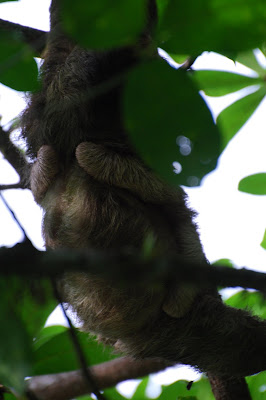Just when my last night hike was seeming less eventful than the first, Kenneth pointed out a common paraque on the forest floor. He had to guide our eyes to it over several minutes then said he wanted to try and sneak up to it and pick it up. If he was trying to impress the six lady science teachers I think it worked. Check this out…
This bird can be seen along roadsides near fields or on the forest floor. If you sweep your flashlight along the ground you’re likely to see the reddish glow of their eyes. It calls out loudly at night and its sound reminded me of the whoop-pir-will, another in the nightjar family that we hear when out camping in Wisconsin.
This bird can be seen along roadsides near fields or on the forest floor. If you sweep your flashlight along the ground you’re likely to see the reddish glow of their eyes. It calls out loudly at night and its sound reminded me of the whoop-pir-will, another in the nightjar family that we hear when out camping in Wisconsin.

















































